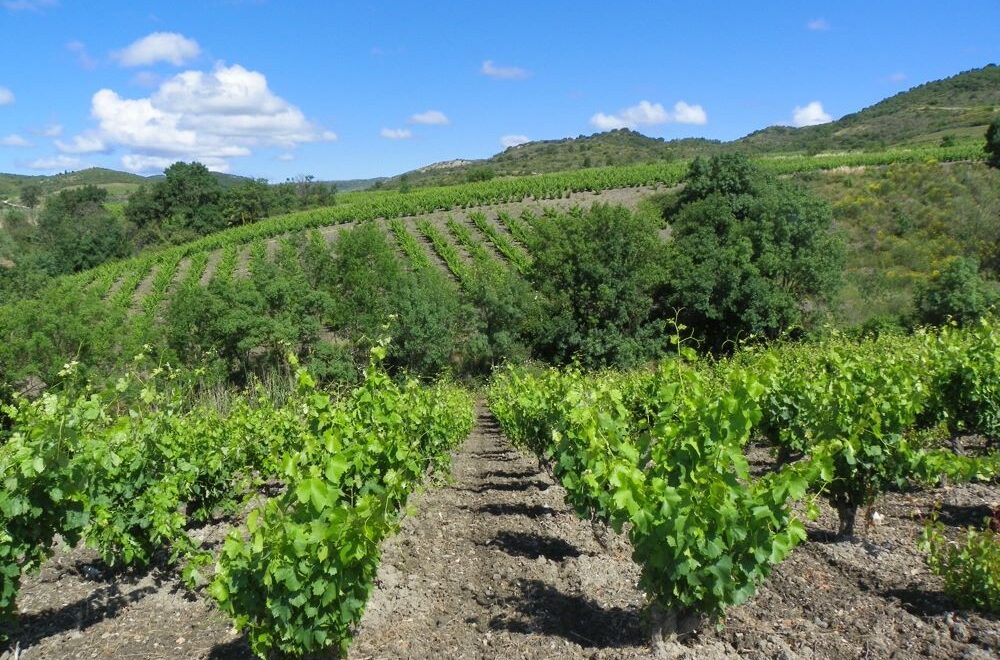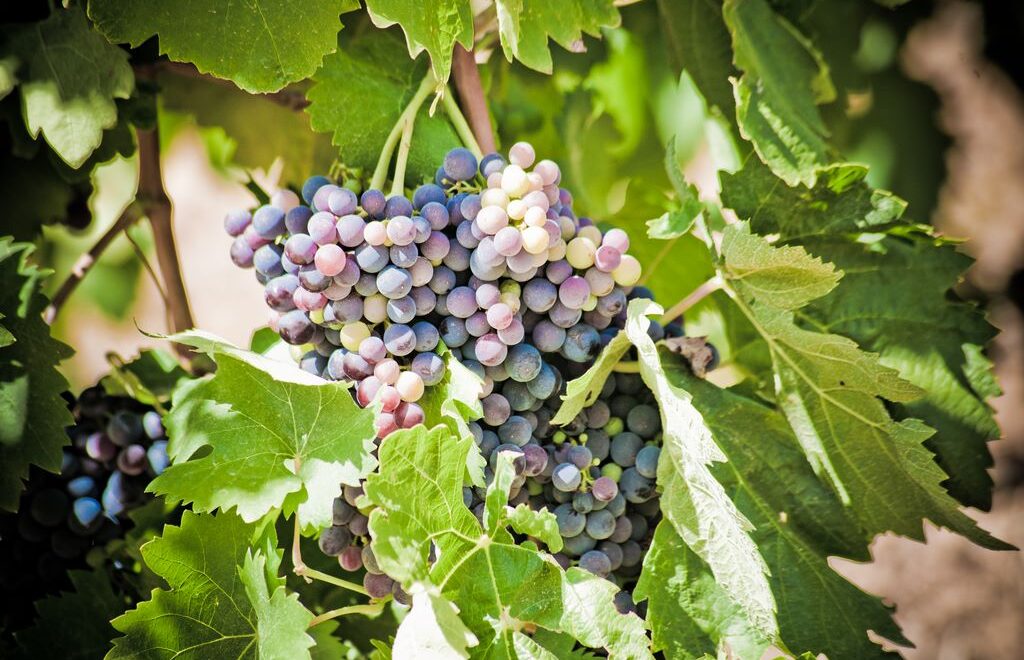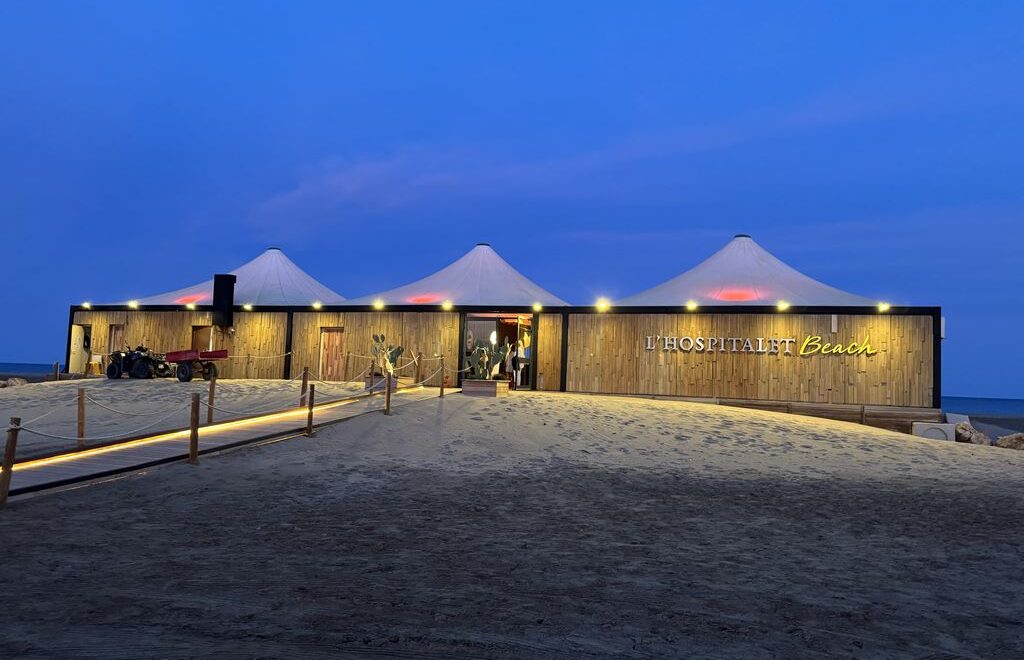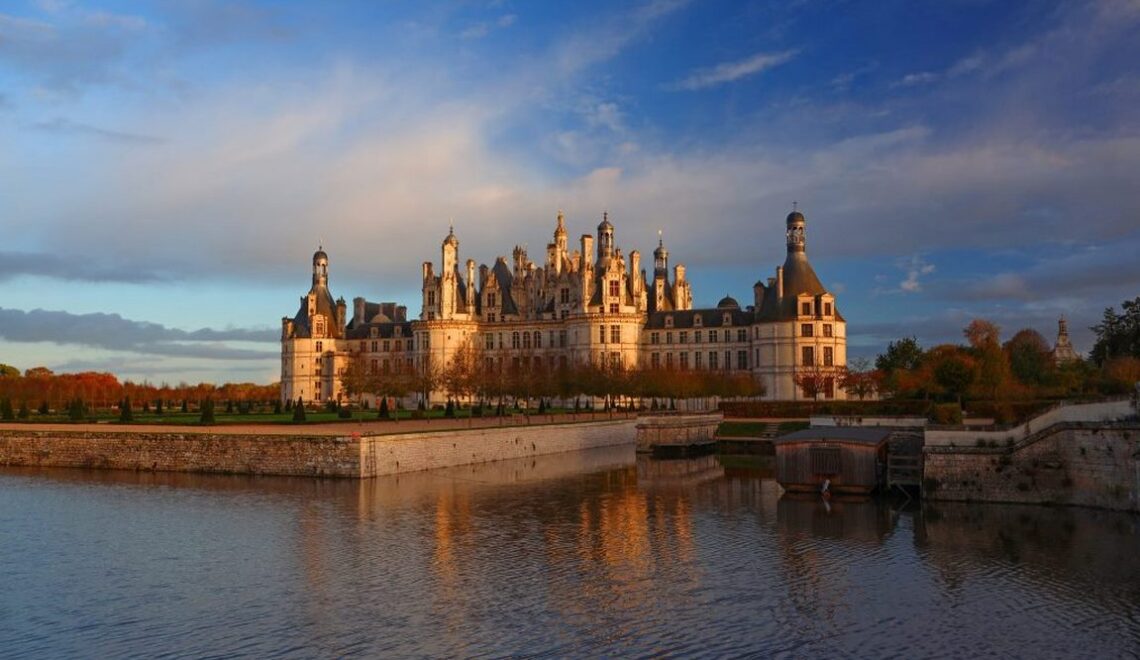
"Beautiful as a fairy palace, grand as a king's palace"., said Victor Hugo. "A monument to prideaccording to Flaubert. François 1st created Chambord, the symbol of the Renaissance, on the borders of the Loire Valley and Sologne. Everything here is the result of the will and choices of one man.
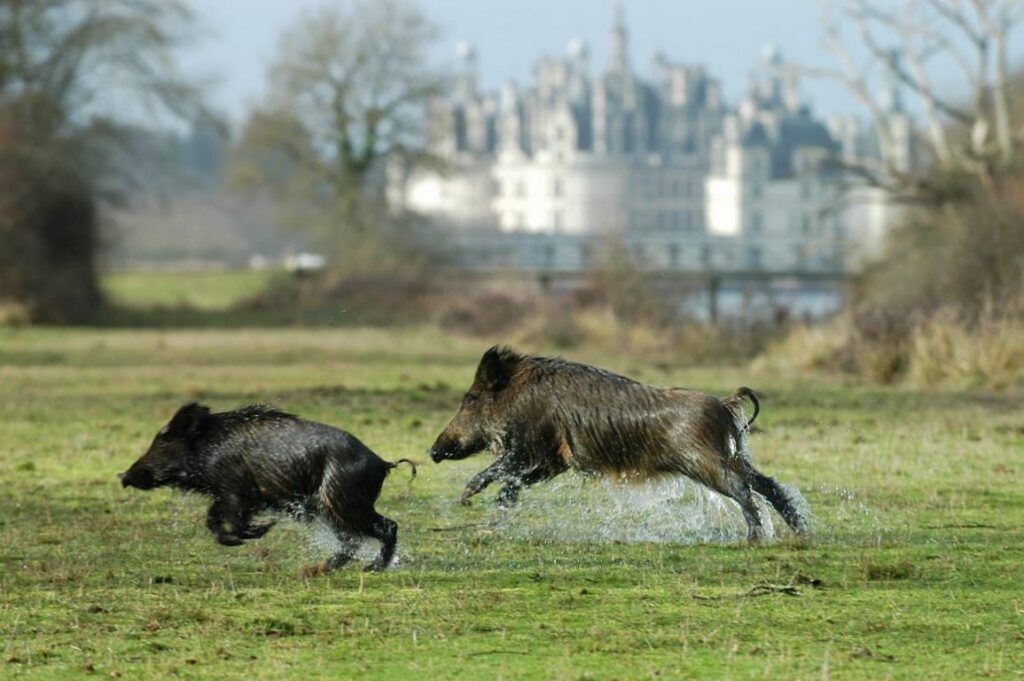
Francis 1st (1494-1547) founded a new lineage, the Valois, so the château took on dynastic and... diplomatic significance. 440 rooms, 800 capitals, 80 staircases. And a forest full of game for hunting: wild rabbits and, emerging from the leaves like a dazzle, long pheasants. This forest park of 5,440 hectares, 1,000 of which are open to the public, was once royal. With woods, ponds and a 33 km wall surrounding the hunting grounds.
A castle built on marshy ground
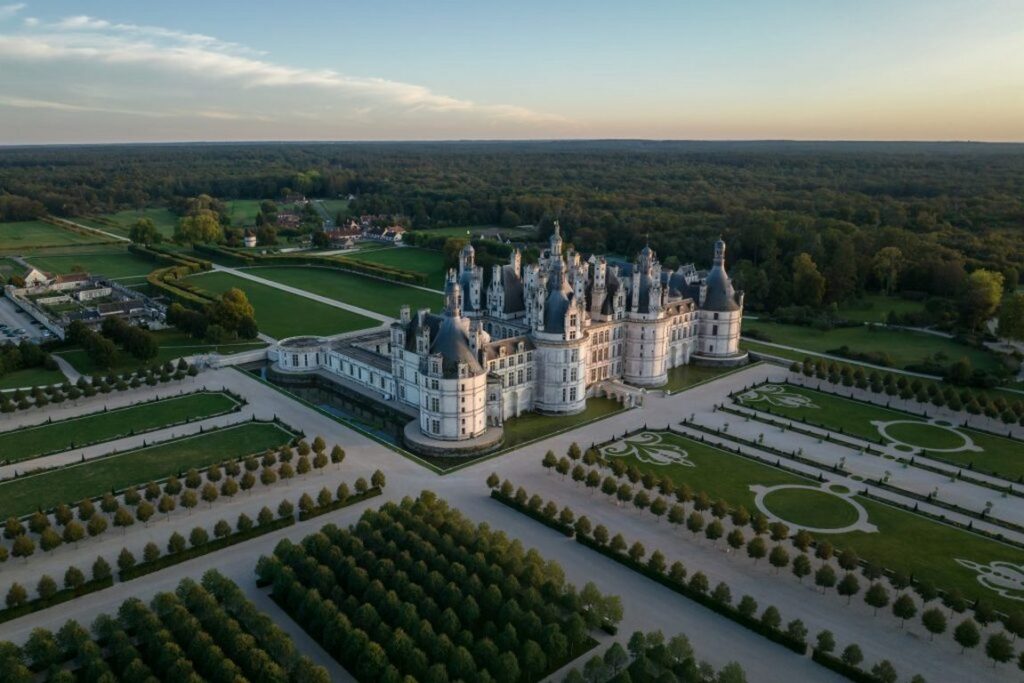
"Cambo Ritos" is Old Celtic for "the ford on the bend". Chambord could not divert the course of the Cosson, but rests on oak pillars sunk up to 12 m deep. The jewel of Renaissance architecture required 200,000 tonnes of tuffeau stone, a fine-grained Touraine limestone that is easy to carve. It was brought from Bourré, near Montrichard, by boat to the port of Chambord at Saint-Dyé-sur-Loire and then by cart. The king wanted to control construction. Each time he visited, he did not hesitate to improve the layout of the château. What was the influence of Leonardo da Vinci, who lived next door at the Château du Chambord? Clos-Lucé ? It is now accepted that "first painter, first engineer and first architect to the kingas François 1st liked to call it, influenced the architecture of the château.
The king is very Christian, with a temporal and a sacred function. On the second floor, in the cross-shaped room, we see alternating Fs and salamanders: some swallow fire and others spit water. At Chambord, the salamander appears more than 300 times on the ceilings and walls. Along with the king's motto : "Nutrisco and extinguoI nurture (the good fire), I extinguish (the bad)".
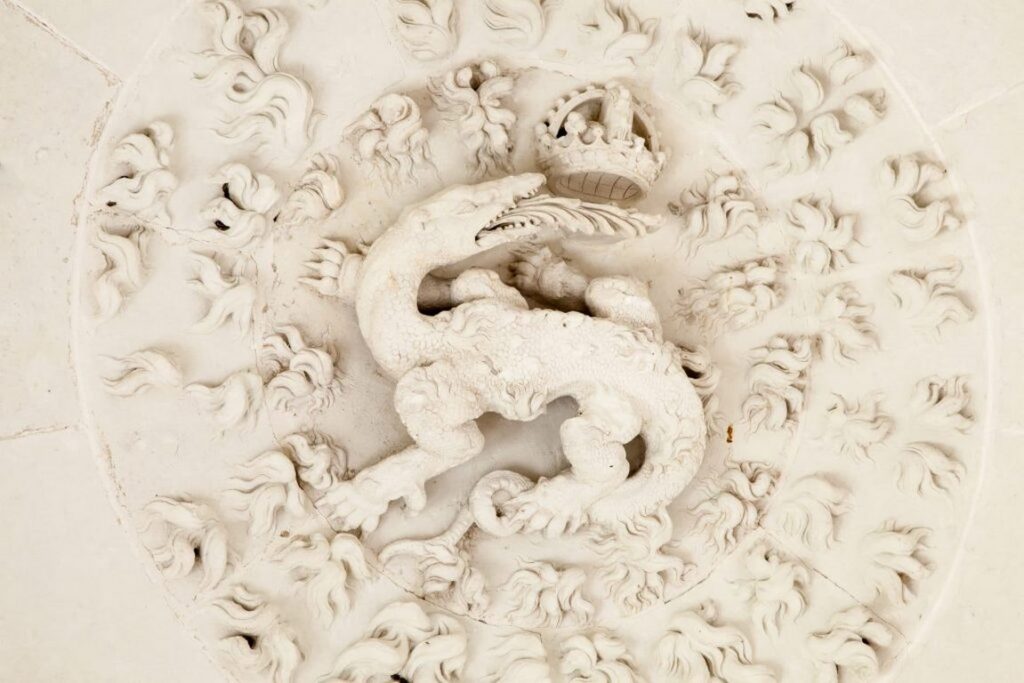
Crowns crown the salamanders or encircle the "F" of François. They are all "imperial", i.e. closed and surmounted by a globe and a cross. This is a reference to Charlemagne, the only king of France to have also been emperor. On the terrace, the crowns are different: open and adorned with a knotted Franciscan rope. They evoke the king Saint-Louis.
The sober decoration of the château's interior is followed by the rich ornamentation of its roofs.
The layout is organised around the keep. A strange staircase rises in the middle of a huge Greek cross-shaped vestibule. Two flights of steps wind around each other, around a central core. You can see yourself from one staircase to the other. Two people can go up and down without meeting. Like a propeller, the castle seems to turn on itself and fly towards the lantern tower and the sky.
Sketches by Leonardo da Vinci?
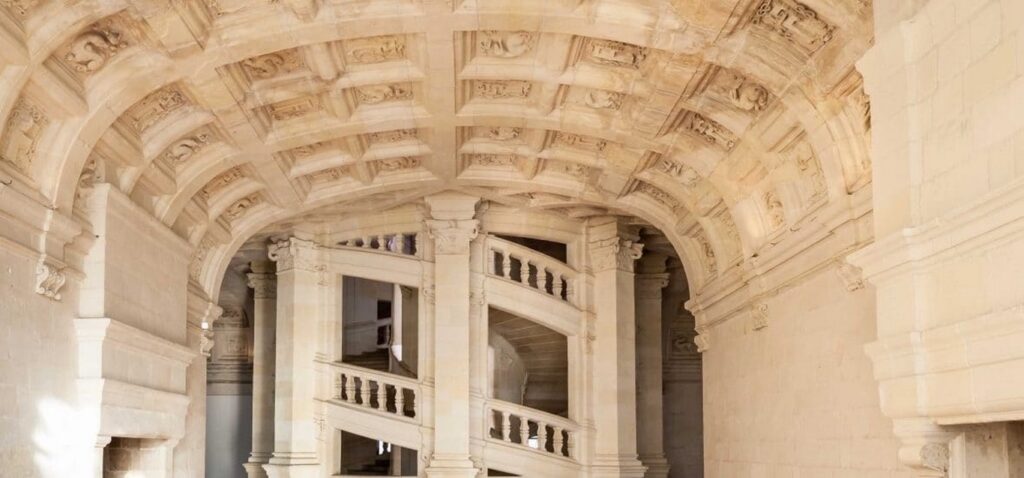
This double spiral staircase leads to the flats, now almost deserted, and above all to the roofs. Surprise: the staircase is triple! From the 3rd floor upwards, the central void in the middle of the 2 flights of steps is occupied by a 3rd staircase that rises to a height of 20 m, housed in the core of the main staircase and built over the void. Never before seen! An identical sketch can be found in Leonardo da Vinci's notebooks. Leonardo had been dead for a long time when the staircase was built, but it is likely that he was the inspiration behind it. This "Jacob's ladder" allows you to climb to the top (58 m) of the lantern tower, crowned with a fleur-de-lys instead of a cross. It was to become the official crown of the monarchy.
You're in the sky, as close to God as you can get. As in a church, the staircase is supported by flying buttresses. On one of them is written "1533".
Chambord was a dream of pride. Charles V, François I's greatest enemy, was going to fight a Protestant revolt in Flanders. Francis I (who had been his prisoner after the defeat at Pavia) authorised him to cross the country and wanted to dazzle him. He invited him to Chambord (1539). The horsemen saw the bright blue of the slate, the white of the tufa and the statues. The emperor only spent one night at Chambord, but was very impressed. He confided that he had "I've never seen anything more beautiful than this palace rising from the depths of the woods ".
The winner of the Battle of Marignan (he was 20 at the time) reigned for 32 years, but only lived in Chambord for 42 days. The castle was bought by the state in 1930.
Chambord is located 17 km from Blois in the department of Loir-et-Cher, in the Centre-Val de Loire region.
426 rooms, around forty flats, 77 staircases.
Read more : Chambord. Dossier de l'Art n° 109. 2004. Editions Faton
Text : Michèle Lasseur



